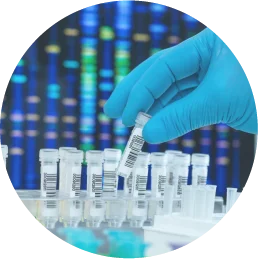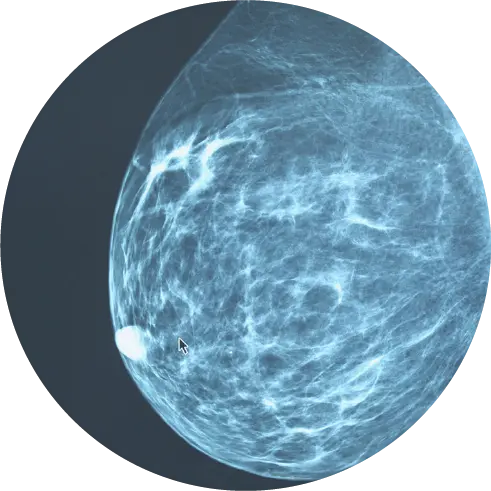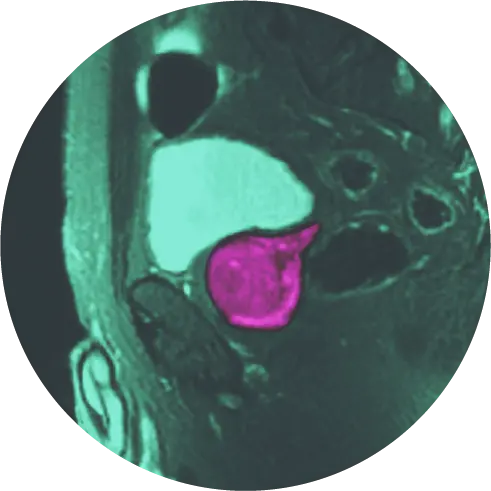One-in-eight women are diagnosed with breast cancer each year, making it the most common form of the disease. A member of your family, one of your friends, or a coworker has probably been touched by this cancer in some way.
But it’s not the only commonly diagnosed condition.
With 5.5 million new cases each year, the human papilloma virus (HPV) is the most frequently occurring sexually transmitted infection (STI).1
You might wonder, “Is there a link between the two? If so, how can I reduce my risk?”
Today, researchers continue to study their possible connections – including shared risk factors. Let’s dive into breast cancer, HPV, and how you can lower your risk for both.
What Causes Breast Cancer?
Despite decades of research, experts don’t yet know the exact cause(s) of breast cancer. However, there are many risk factors, including:
- increasing age
- obesity
- radiation exposure
- family history of breast cancer
- personal history of breast conditions
- giving birth at an older age
- not giving birth
- inherited genes
- first menstrual period at a young age
- starting menopause at an older age
- postmenopausal hormonal therapy
- drinking alcohol2
It’s unclear how the lifestyle-related factors on this list (radiation exposure, alcohol consumption) may cause normal cells to become cancerous.
What researchers do know is this: Hormones and genetics play a role. They also theorize that breast cancer develops due to a complicated combination of your genetics and your environment.
Where Does HPV Come into Play?
HPV isn’t currently considered a risk factor for breast cancer – but some studies do suggest a connection.
What is HPV?
A group of related viruses that may cause warts on the mucous membranes of the skin, HPV spreads through close contact with someone who has the virus. A person with HPV can pass the infection to another person, even when they have no symptoms.
In 9 out of 10 cases, HPV goes away on its own within two years.
But, in 1 out of 10 cases, it can lead to genital warts and some forms of cancer. This includes cancer of the vagina, vulva, penis, or anus. HPV can also cause oropharyngeal cancer, which includes the back of the throat, tongue, and tonsils.3
HPV and Breast Cancer
Did you know that there are more than 100 different subtypes of HPV?
Studies examining links between HPV and breast cancer largely focus on subtypes 16 and 18.
A 2019 study of 72 breast cancer patients found that nearly 50% had HPV DNA in their breast cancer tissue. These results were consistent with the findings of a 2017 study that also found HPV DNA in breast cancer cells.4,5
A 2020 study also pointed to the presence of HPV in breast cancer cells. The authors stressed the need for further research to fully understand the connection between breast cancer and HPV.6
How Can You Lower Your Risk for HPV?
Getting vaccinated is the best way to prevent HPV.
Who is eligible? Current FDA guidelines include the following groups:
- Children ages 9 to 14 receive 2 shots over a 6-month period, and
- People ages 15 to 26 first getting the vaccine receive a series of 3 shots.
Most people over the age of 27 have already been exposed to the virus, so the vaccine isn’t recommended for this age group. If you’re in this age group, talk with your doctor about whether the vaccine is right for you.
There are also preventive steps you can take, including:
- Limiting your sexual partners.
- Practicing safe sex, including the use of latex condoms. (Keep in mind that condoms can’t cover all body areas that can transmit the infection.)
- Knowing your sexual partners and ask questions about their sexual history.7
How Can Screenings Help Lower Your Cancer Risk?
Routine screenings are essential to detecting abnormal and/or cancerous cells.
Although HPV is viral, it can lead to cervical cancer.3 That’s why regular screenings are so important: They can help identify any abnormal cells early, giving you and your doctor the chance to prevent HPV from progressing to cancer.
There are two common screenings: the Pap test and the HPV test.
Also called a Pap smear, the Pap test looks for abnormal cells that can lead to cervical cancer. An HPV test looks for the human papillomavirus, which can cause cervical cancer. With an HPV/Pap co-test, your doctor collects a sample of cervical cells to run both tests.
Here are the screening recommendations for cervical cancer and HPV:
- Begin cervical cancer screening at age 25 and follow your doctor’s recommendation for the timeline for further screenings. Many women only need a Pap smear every 3-to-5 years if they have a history of normal test results.
- If you’re between the ages of 25 and 65, get a primary HPV test every 5 years.
- Another option is a co-test (an HPV test with a Pap test) every five years.8
How to Detect Breast Cancer Early
A cure for breast cancer is yet to come. Although we can’t prevent it, we do know that early detection works: Breast cancers found during routine screenings are typically smaller and less likely to have metastasized or spread beyond the breast.
The American Cancer Society recommends that
- women ages 40 to 44 start screening with annual mammograms,
- women ages 45 to 54 get a yearly mammogram, and
- women 55 and up continue routine screenings.9
Contact Us
Are you ready to schedule your breast screening?
At HALO Diagnostics, we offer breast screenings at our HALO Breast Care Center in Chico, Silicon Valley MRI in Silicon Valley, and Palms Imaging Center in Oxnard, as well as Precision Imaging Centers’ four locations in and around Jacksonville, Florida.
References
1. Cates, J.R., Wong, T., Semenciw, R. et al. (2001). Human papilloma virus: A hidden epidemic in the United States. Population Reference Bureau. Retrieved from https://www.prb.org/resources/human-papillomavirus-a-hidden-epidemic-in-the-united-states/
2. Boughey, J.C. (2022). Breast cancer. Mayo Clinic. Retrieved from https://www.mayoclinic.org/diseases-conditions/breast-cancer/symptoms-causes/syc-20352470
3. Centers for Disease Control & Prevention. (2022). Genital HPV infection – Basic fact sheet. Published online April 12, 2022.
4. Khodabandehlou,, Mostafaei, S., Etemadi, A., et al. (2019). Human papilloma virus and breast cancer: The role of inflammation and viral expressed proteins. BMC Cancer. Published online January 14, 2019.
5. Salman, N., Davies, G., Majidy, F., et al. (2017). Association of high-risk human papilloma virus and breast cancer: A UK-based study. Scientific Reports. Published online February 27, 2017.
6. Islam, S., Chakraborty, B., & Panda, C.K. (2020). Human papilloma virus (HPV) profiles in breast cancer: Future management. Annals of Translational Medicine. Published online May 7, 2020.
7. National Cancer Institute. (2021). Human papilloma virus (HPV) vaccines. Published online May 25, 2021.
8. National Cancer Institute. (2020). ACS’s updated cervical cancer screening guidelines explained. Published online September 18, 2020.
9. American Cancer Society. (2022). American Cancer Society recommendations for the early detection of breast cancer. Published online January 14, 2022.




